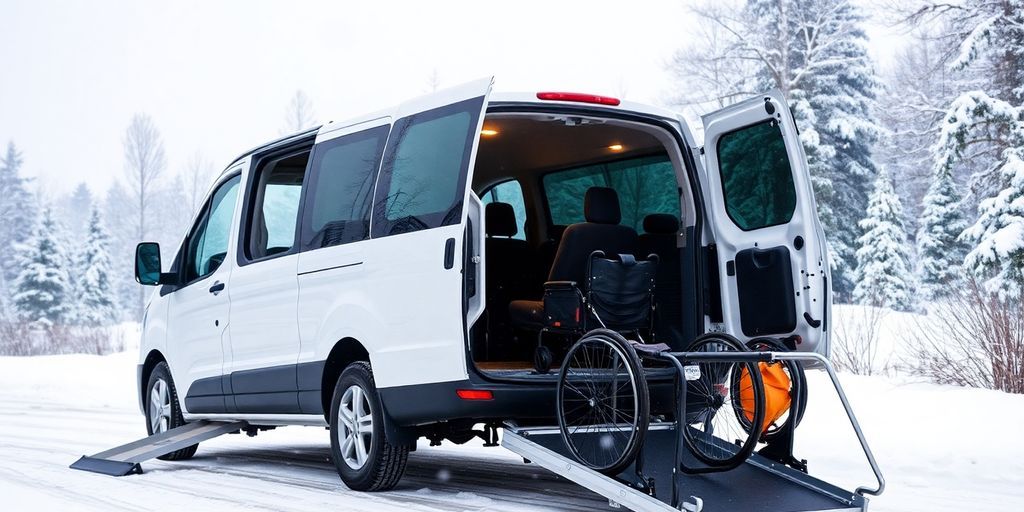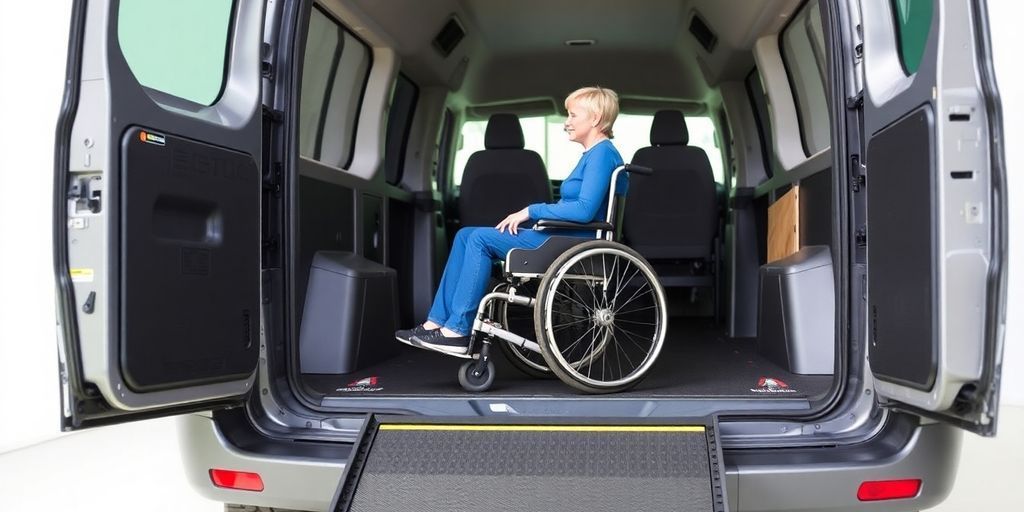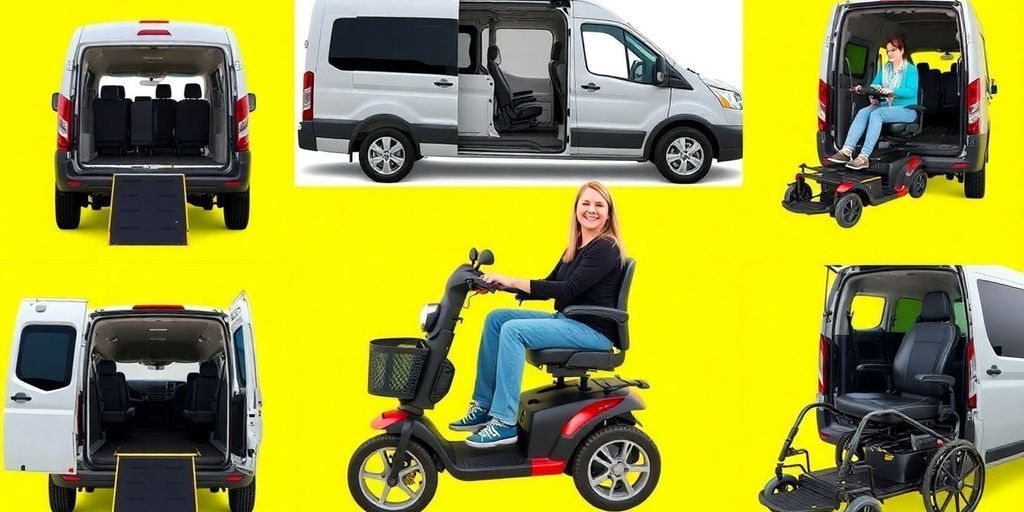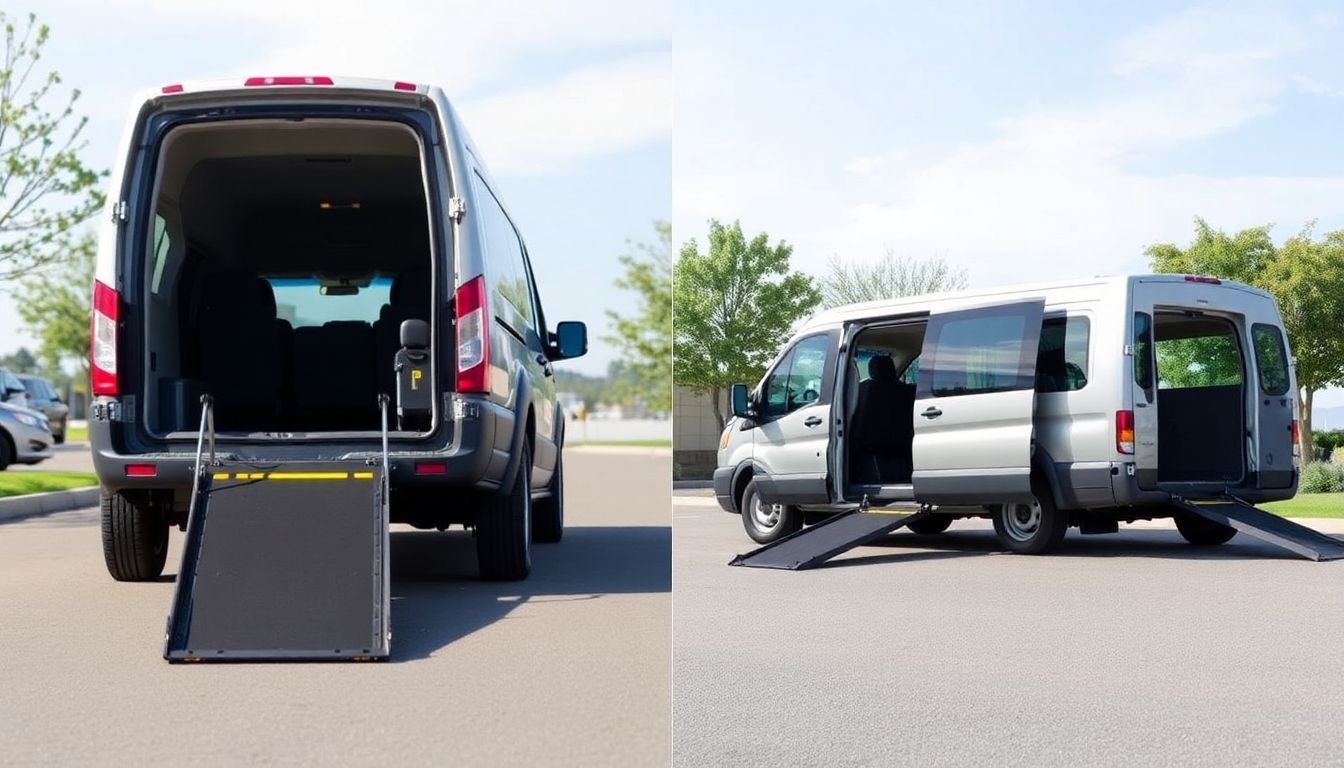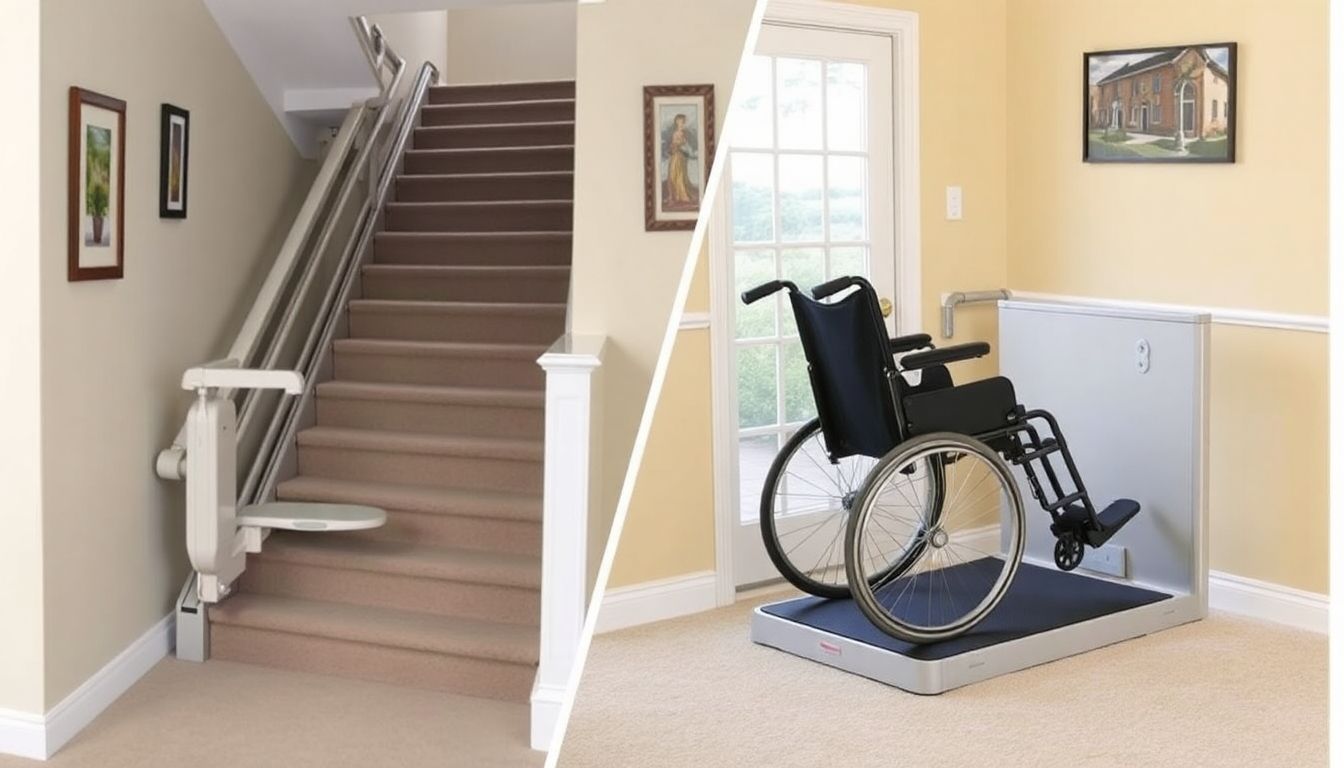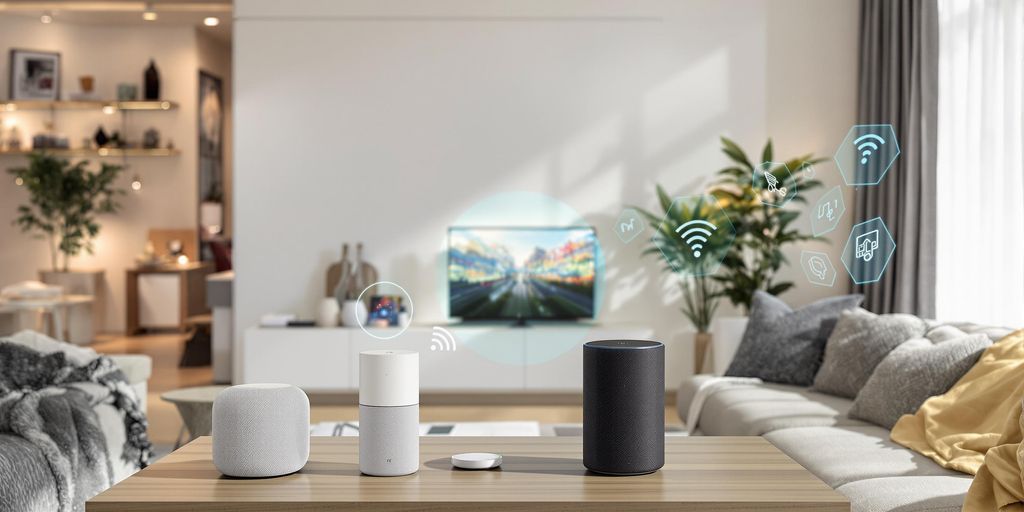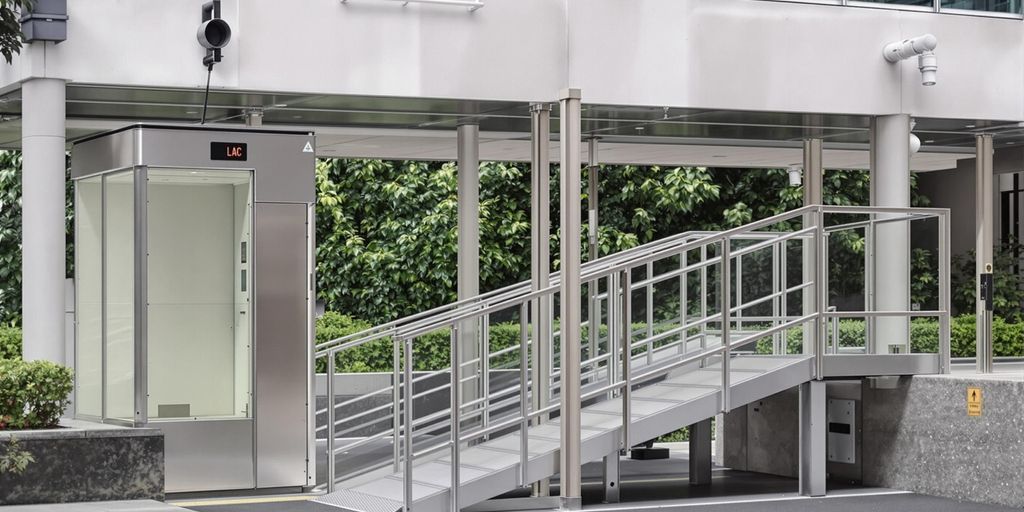The Top Little-Known Facts About Mobility Aids Every Homeowner Should Learn
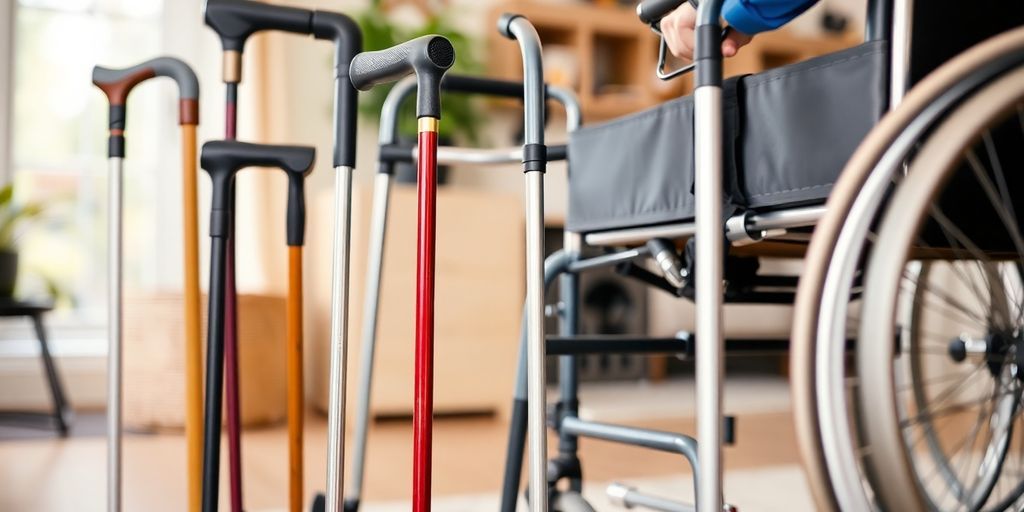
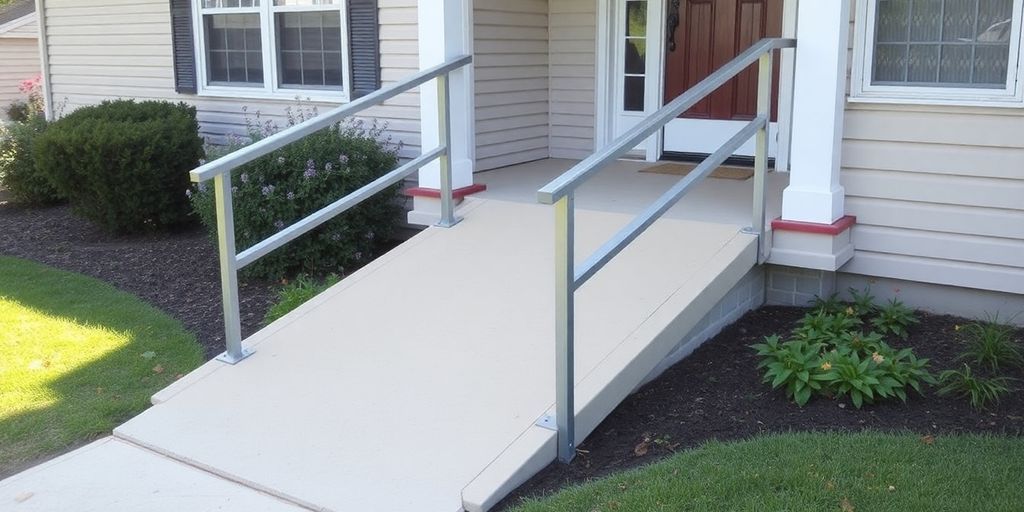
Mobility aids are more than just tools; they're lifelines for many people. They help folks get around their homes and communities safely and comfortably. From wheelchairs to smart home devices, there's a wide range of options available that can make life a bit easier. But not everyone knows about all the possibilities out there. This article dives into some lesser-known facts about mobility aids that every homeowner should know. Whether you're looking to make your home more accessible or just curious about what's available, these insights might surprise you.
Key Takeaways
- Mobility aids come in many forms, from wheelchairs to smart home devices, each serving different needs.
- Understanding individual mobility requirements is crucial for selecting the right aid.
- Home modifications like ramps and grab bars can significantly enhance accessibility.
- Consulting with mobility experts can provide tailored solutions for specific needs.
- Affordability options, including financing and rentals, are available for many mobility aids.
1. Wheelchairs
Wheelchairs are more than just a means of transportation; they are a lifeline for many, providing independence and mobility. Understanding the different types of wheelchairs can help you choose the right one for your needs. There are two main categories: manual and power wheelchairs.
- Manual Wheelchairs: These are generally lightweight and can be easily transported without any special equipment. They require less maintenance compared to their power counterparts. If you're someone who values simplicity and ease of use, a manual wheelchair might be the way to go. Plus, they are often more affordable.
- Power Wheelchairs: These are battery-operated and offer greater independence, especially for those who might struggle with the physical effort of using a manual wheelchair. They come with various features, like adjustable seating and joystick controls, making them suitable for both indoor and outdoor use.
A wheelchair isn't just a piece of equipment; it's a gateway to freedom for many individuals. Choosing the right type can significantly impact daily life and ease of movement.
When considering a wheelchair, think about your lifestyle and daily activities. Manual wheelchairs are often preferred for their lightweight design and ease of transport, making them ideal for those who travel frequently or need to navigate tight spaces. Power wheelchairs, on the other hand, offer more independence and are great for outdoor use.
In conclusion, whether you opt for a manual or power wheelchair, the key is to find one that fits your needs, enhances your mobility, and integrates seamlessly into your lifestyle.
2. Mobility Scooters
Mobility scooters are a great way to get around if walking long distances is tough for you. They're like a bridge between walking and using a wheelchair, offering a bit more freedom and independence. Choosing the right scooter is all about matching it to your lifestyle. Do you need something compact for tight spaces or a heavy-duty one for outdoor adventures?
Here are some things to think about when picking a mobility scooter:
- Where will you use it? Indoors or outdoors? Some scooters are better suited for rougher terrains.
- How far do you need to go? Check the scooter's battery range to make sure it fits your daily needs.
- What features matter most? Look for things like comfort, ease of use, and storage options.
Mobility scooters come in a variety of styles. You can find compact models that are easy to transport, heavy-duty options for outdoor use, and even folding scooters for convenience. Each has its own perks, so think about what fits your needs best.
"Finding the right scooter can greatly enhance your independence and quality of life."
Regular maintenance is key to keeping your scooter in good shape. Here are some tips:
- Keep it clean. Wipe down your scooter regularly to prevent dirt buildup.
- Take care of the battery. Charge it regularly and avoid letting it fully drain.
- Get it serviced. Even with regular upkeep, a professional check-up once a year can catch issues early.
Mobility scooters can be a real game-changer, offering a newfound sense of freedom and independence. Whether you're using it for quick trips to the store or leisurely rides around the neighborhood, they make getting around much easier. Just make sure you pick the right one for your lifestyle and keep it well-maintained to enjoy all the benefits it offers.
3. Stair Lifts
Understanding Stair Lifts
Stair lifts are a fantastic solution for anyone who struggles with stairs, whether due to age, disability, or other mobility challenges. These devices essentially act as a personal elevator, transporting users up and down stairs safely and comfortably. Stair lifts enhance independence and safety, allowing individuals to access all areas of their home despite physical limitations.
Types of Stair Lifts
Stair lifts are not one-size-fits-all; they come in various types to suit different needs:
- Straight Stair Lifts: Ideal for homes with a straight staircase. These are the most common and generally the easiest to install.
- Curved Stair Lifts: Designed for staircases with turns or landings. These are custom-made to fit the unique shape of your stairs.
- Outdoor Stair Lifts: Built to withstand the elements, these are perfect for accessing porches, gardens, or other outdoor areas.
Benefits of Stair Lifts
- Enhanced Mobility: Users can move between floors with ease, reducing the need for assistance.
- Safety Features: Most stair lifts come equipped with seatbelts, obstruction sensors, and emergency stop buttons to ensure a secure ride.
- Improved Quality of Life: By eliminating the challenge of stairs, stair lifts allow users to maintain their daily routines and social interactions without worry.
Installation and Maintenance
Installing a stair lift can be done quickly, often within a day, by a professional. Regular maintenance is crucial to keep it running smoothly:
- Check the Battery: Ensure the battery is charged and functioning correctly.
- Clean the Track: Regularly clean the track to prevent dust and debris from affecting the lift's operation.
- Professional Inspections: Schedule annual inspections to catch any potential issues early.
"Choosing the right stair lift can greatly enhance your mobility and safety at home. It's important to consider your specific needs and the layout of your stairs when making a decision."
For those considering a stair lift, it's not just about the device itself but also about the freedom and peace of mind it brings. Whether indoors or outdoors, there's a solution tailored to fit your unique needs. Stairlifts enhance independence and safety, allowing users to access all areas of their home despite physical limitations. Selecting the appropriate type is essential for maximizing benefits.
4. Ramps
Ramps are a game-changer for making homes more accessible, especially for those using wheelchairs or walkers. They offer a smooth transition over stairs and curbs, making it easier to enter and exit buildings. Here's what you should know:
- Material Matters: Ramps can be made from various materials, but aluminum and wood are the most common. Aluminum ramps are lightweight and require less maintenance, while wooden ramps offer a more natural look but need regular upkeep.
- Types of Ramps:
- Threshold Ramps: Perfect for small steps and doorways. They provide a gentle incline that's easy to navigate.
- Modular Ramps: These are customizable and can be adjusted to fit different spaces, making them ideal for homes with unique layouts.
- Portable Ramps: Great for on-the-go accessibility. They're foldable and can be easily transported, perfect for travel or temporary needs.
Ensuring your home is accessible isn't just about convenience. It's about creating a safe and welcoming environment for everyone. Whether you're considering a permanent installation or a temporary solution, ramps can significantly enhance mobility.
When thinking about installing a ramp, it's essential to consider the slope and length. A ramp that's too steep can be dangerous, while one that's too long might not fit well in your space. Consulting with a professional can help you find the right balance.
Lastly, remember the importance of keeping ramps clear of debris, especially in winter months. Snow and ice can make ramps slippery, so regular maintenance is key to safety. For more insights on how ramps played a role in history, such as during Franklin D. Roosevelt's presidency, ramps have long been a symbol of accessibility and independence.
5. Grab Bars
Understanding the Role of Grab Bars
Grab bars aren't just for hospitals or care facilities anymore; they're becoming a staple in homes for those looking to age in place or improve safety. These simple bars offer vital support, especially in slippery areas like bathrooms. Whether you're stepping out of the shower or need a little extra balance getting up from the toilet, grab bars are there to help.
Types of Grab Bars
You might think a grab bar is just a metal rod, but there's more variety than you might expect:
- Straight Bars: The classic choice, perfect for most situations.
- Wave or Curved Bars: Offers a more stylish look while still providing support.
- Flip-up Bars: Great for small spaces since they can be moved out of the way when not in use.
Installation Tips
When it comes to installing grab bars, placement is key. Strategically placing grab rails in high-risk areas like bathrooms is crucial. Here’s what to consider:
- Height: Make sure they’re at a comfortable height for everyone in the household.
- Studs: Always secure them to wall studs or use proper anchors to ensure they can support weight.
- Angles: Consider installing them at an angle for easier grip.
Regular checks and maintenance of your grab bars can prevent accidents and ensure your home remains a safe space.
Beyond the Bathroom
While bathrooms are the most common place for grab bars, don't forget about other areas:
- Staircases: Adding grab bars can provide extra support alongside traditional railings.
- Hallways: Useful for those who need a bit of help moving from room to room.
- Kitchens: A discreet bar can help if you need a steadying hand while cooking.
Final Thoughts
Incorporating grab bars into your home is a smart move for anyone looking to boost safety and independence. These bars are not only functional but can also be a stylish addition to your home if you choose the right design. Remember, it's not just about preventing falls; it's about creating a supportive environment where you feel secure and confident.
6. Walkers
Walkers are a staple for those needing a bit of extra support while walking. They come in various styles and serve different purposes, making them a versatile choice for many.
Types of Walkers
- Standard Walkers: These are your basic walkers, no wheels, just the frame. You lift them to move forward. They're great for stability but can be a bit slow-moving.
- Wheeled Walkers: Adding wheels makes a walker easier to push. These are perfect if you need some support but want to move a bit quicker.
- Rollators: These are the fancy walkers with wheels, a seat, and often a basket. They are ideal for someone who likes to take breaks or carry items along.
Benefits of Using a Walker
- Increased Stability: Walkers provide a broad base of support, which helps prevent falls.
- Improved Mobility: They allow users to move around more freely, both indoors and outdoors.
- Enhanced Confidence: Knowing you have support can boost your confidence to move around more.
Walkers are not just about getting from point A to B; they offer freedom and independence to those who might otherwise be limited by mobility issues.
Choosing the Right Walker
When picking a walker, consider the following:
- Weight Capacity: Make sure it can support your weight comfortably.
- Adjustability: The height should be adjustable to fit your needs.
- Portability: If you travel, consider a foldable model for easy transport.
In essence, walkers are more than just mobility aids. They are a key to maintaining independence and enjoying a fuller life. Whether you're using a standard walker or a rollator, the right choice can make all the difference in your daily routine.
7. Canes
Canes might seem simple, but they pack a punch when it comes to mobility support. They're not just for the elderly; folks of all ages use them for various reasons. Whether it's a temporary injury or a long-term condition, a cane can be a game-changer.
Choosing the Right Cane
Picking the right cane isn't just about grabbing the first one you see. You gotta consider a few things:
- Height: The cane should reach the crease of your wrist when you stand straight. If it's too short or too long, it won't help much.
- Handle Type: There are different handles like T-shape, offset, or ergonomic. Each offers a different kind of grip and comfort.
- Material: Canes come in wood, metal, or even carbon fiber. Each material has its own pros and cons in terms of weight and durability.
"A cane isn't just a stick; it's a tool that can provide stability and confidence."
Types of Canes
- Standard Canes: These are the most common and are great for a little extra balance.
- Quad Canes: With four feet at the base, these offer more stability and are perfect for those who need a bit more support.
- Folding Canes: Handy for travel, these can collapse and fit in a bag easily.
Tips for Using a Cane
- Right Height: Always adjust the cane to the correct height for comfort and effectiveness.
- Proper Grip: Hold it in the hand opposite the injured or weaker leg.
- Walking Rhythm: Move the cane at the same time as your weaker leg for better balance.
Canes are more than just a walking aid; they're a mobility aid that can make a real difference in daily life. They're a simple yet effective way to regain independence and confidence.
8. Vehicle Lifts
Vehicle lifts are a game-changer for folks who need to transport their wheelchairs or scooters. These lifts make it possible to get your mobility device in and out of a vehicle without a struggle. They're designed to fit various types of vehicles, like cars, minivans, and SUVs.
Types of Vehicle Lifts
- Platform Lifts: These are perfect for larger vehicles. They offer a stable surface that supports the wheelchair or scooter during transport.
- Hoist Lifts: More economical and versatile, hoist lifts work well with smaller cars. They're easy to store when not in use.
- Hybrid Lifts: These combine the best of both worlds, offering flexibility and ease of use for different vehicle types.
Installation and Maintenance Tips
- Professional Installation: Always go for professional installation to make sure the lift is secured properly.
- Regular Maintenance: Keep up with maintenance checks to ensure everything is in working order. This includes checking the power and manual rotation features.
- User Training: Make sure users know how to operate the lift safely.
Choosing the Right Lift
When picking a vehicle lift, consider the following:
- Vehicle Type: Ensure the lift matches your vehicle's make and model.
- Mobility Device: Think about the size and weight of your wheelchair or scooter.
- Usage Frequency: If you use it a lot, go for a model that's durable and easy to operate.
With the right vehicle lift, you can enjoy greater independence and ease in your daily travels. It's not just about getting from point A to B; it's about doing it comfortably and safely.
If you're considering a vehicle lift, trusted wheelchair and scooter lifts from Bruno are a great option. They're designed to fit a variety of popular cars, trucks, and SUVs, ensuring a secure and reliable transport solution.
9. Home Elevators
Home elevators are becoming a popular choice for folks looking to make their homes more accessible. These nifty devices can be a game-changer, especially if you or a loved one has trouble getting around. Forget about lugging heavy stuff up the stairs; a home elevator can take care of that.
Why Consider a Home Elevator?
- Accessibility: Home elevators make it easier for everyone to move between floors, whether you're using a wheelchair or just want to avoid stairs.
- Increased Home Value: Adding a home elevator can boost your property's worth, making it a smart investment.
- Convenience: No more carrying groceries or laundry up the stairs. Just load them into the elevator and you're good to go.
Picture this: No more worrying about stairs. A home elevator can mean the difference between staying in your beloved home or having to move because of mobility issues.
Types of Home Elevators
- Hydraulic Elevators: These use fluid mechanics to move the elevator, offering a smooth and quiet ride.
- Traction Elevators: Ideal for multi-story homes, they use a pulley system to move the cab.
- Pneumatic Elevators: These are vacuum-powered and don't need much space, making them perfect for smaller homes.
Key Features to Look For
- Safety Features: Emergency stop buttons, backup power systems, and door sensors are crucial for safety.
- Customization: Many elevators can be tailored to fit your home's style and your specific needs.
- Ease of Use: Look for elevators with intuitive controls and easy-to-read displays.
Home elevators are not just about moving between floors; they're about enhancing home accessibility and making life a bit easier every day. Whether you're planning for the future or addressing current mobility challenges, a home elevator can be a valuable addition to your home.
10. Transfer Aids
Transfer aids are like unsung heroes in the world of mobility. They help people move from one place to another, be it from a wheelchair to a bed, or even from a chair to a car. These aids are essential for maintaining independence and dignity in daily life.
Why are transfer aids important? Well, they can significantly reduce the risk of injury for both the person being assisted and their caregiver. Imagine trying to lift someone without any help—it's not only hard but can also lead to serious injuries.
Here's a quick rundown of some common types of transfer aids:
- Transfer Boards: These are flat boards that help in sliding from one seat to another. Perfect for short distances and smooth surfaces.
- Transfer Belts: Worn around the waist, these belts provide a secure grip for caregivers to assist with standing or sitting transitions.
- Patient Lifts: These are mechanical devices that lift a person from a bed or wheelchair, often used in homes and healthcare settings.
Making use of the right transfer aid can transform daily routines, making them safer and more manageable. It's not just about getting from A to B; it's about doing so with confidence and ease.
For those looking for mobility equipment designed for various settings, transfer aids are an essential consideration. They ensure that transitions are smooth, reducing the physical strain on both the user and their helper. Whether you're a caregiver or someone in need of assistance, these tools can make a world of difference.
11. Barrier-Free Showers
Barrier-free showers are a game-changer for anyone facing mobility challenges. These showers offer easy access and a safer bathing experience, especially for those using wheelchairs or who have difficulty stepping over traditional tub edges.
Key Features of Barrier-Free Showers
- Roll-In Access: These showers typically have no threshold, allowing for smooth entry and exit. This is crucial for wheelchair users or anyone who struggles with steps.
- Built-In Seating: Many barrier-free showers come with a built-in seat, providing a comfortable spot to sit while showering. This feature is especially helpful for those who can't stand for long periods.
- Handheld Showerheads: A handheld showerhead adds flexibility and ease of use, making it easier to reach different parts of the body without straining.
Safety Enhancements
- Grab Bars: Install grab bars inside the shower to provide stability and support. It's a simple addition that makes a big difference in preventing slips.
- Non-Slip Flooring: Ensure the shower floor is made from non-slip materials to reduce the risk of falls, especially when the floor is wet.
Creating a barrier-free shower space not only boosts accessibility but also enhances safety and comfort. It's about making your bathroom a place where everyone can feel secure and independent.
For more insights into creating handicap-accessible bathing spaces, barrier-free showers are a top recommendation. They not only meet accessibility needs but also blend seamlessly into modern bathroom designs, offering both functionality and style.
12. Walk-In Tubs
Walk-in tubs are a fantastic addition to any home, especially for those looking to enhance safety in the bathroom. They come with a door that opens and closes, allowing easy access without the need to step over a high tub edge. This feature alone can greatly reduce the risk of falls, which is a common concern in bathrooms.
Imagine taking a bath without the worry of losing your balance or slipping. A walk-in tub provides that peace of mind, making it a smart choice for any household.
Key Features of Walk-In Tubs
- Safety Features: Walk-in tubs often include built-in grab bars, slip-resistant flooring, and anti-scald valves. These elements make bathing safer for individuals of all ages.
- Comfortable Seating: Many models come with built-in seating, allowing you to sit comfortably while bathing. This is particularly beneficial for those with mobility issues.
- Ease of Use: The watertight door ensures that you can easily enter and exit the tub, making it a practical option for everyone, not just those with mobility challenges.
Benefits of Installing a Walk-In Tub
- Enhanced Safety: The primary benefit is the reduction in fall risk, thanks to the low step-in threshold and safety features.
- Increased Independence: For seniors or those with disabilities, a walk-in tub can provide a sense of independence, allowing them to bathe without assistance.
- Therapeutic Options: Some walk-in tubs offer hydrotherapy features, like jets, which can help relieve muscle pain and improve circulation.
Walk-in tubs are not just about safety; they're about enhancing the overall bathing experience. They offer a blend of comfort, security, and therapeutic benefits that can truly transform your daily routine.
13. Adjustable Beds
Adjustable beds are more than just a luxury; they’re a game-changer for anyone needing a little extra help getting comfortable in bed. These beds are designed to improve your sleep and overall health. With the touch of a button, you can elevate your head, feet, or both, which can help with a variety of issues.
Benefits of Adjustable Beds
- Improved Sleep Quality: By adjusting the bed to your preferred position, you can reduce snoring and alleviate sleep apnea symptoms. This is particularly beneficial for those who struggle with breathing issues at night.
- Pain Relief: Elevating your legs or head can ease back pain and reduce pressure on sore joints, making it easier to find a comfortable sleeping position.
- Enhanced Circulation: Adjusting the bed to elevate your legs can help improve blood flow and reduce swelling, which is great for those dealing with circulation problems.
Features to Consider
When choosing an adjustable bed, keep an eye out for these features:
- Remote Control: A user-friendly remote can make adjusting your bed a breeze.
- Massage Functions: Some beds come with built-in massage options to help you relax and unwind.
- USB Ports: Handy for charging your devices while you relax.
Adjustable beds can transform your bedroom into a sanctuary of relaxation and health benefits, making every night a step towards better well-being.
For those dealing with health issues like snoring or acid reflux, adjustable bed bases offer numerous health benefits, including reducing these problems and providing a more restful sleep. If you haven't considered one yet, it might be time to do so.
14. Lift Chairs
Lift chairs, a type of recliner, are more than just comfy seats. They're designed to assist people with mobility challenges by gently lifting them to a standing position. This feature makes them a game-changer for folks who struggle with getting up from a seated position.
Key Features of Lift Chairs
- Motorized Lifting Mechanism: Lift chairs come with a motorized system that smoothly tilts the chair forward, helping users stand up without straining.
- Variety of Positions: Many models offer multiple reclining positions, from upright to fully reclined, providing comfort for different needs.
- Battery Backup: In case of a power outage, some lift chairs have a battery backup to ensure the user can still operate the chair.
Benefits of Using Lift Chairs
- Enhanced Independence: Lift chairs allow users to stand up and sit down without assistance, promoting independence.
- Pain Relief: They can help reduce pain by providing ergonomic support and various reclining options.
- Improved Circulation: By adjusting positions, users can improve blood circulation, reducing the risk of swelling and discomfort.
Lift chairs aren't just for the elderly; they're for anyone needing a little extra help standing up. Imagine having a chair that not only supports your back but also gives you a gentle nudge to get on your feet. It's like having a helping hand whenever you need it.
Considerations When Buying a Lift Chair
- Size and Fit: Ensure the chair fits the user's height and weight for maximum comfort and safety.
- Fabric Options: Choose from a range of materials, such as leather or microfiber, to match your home decor and personal preference.
- Additional Features: Look for extras like heat and massage functions, which can add to the chair's therapeutic benefits.
Lift chairs are more than just furniture; they’re a practical solution for enhancing mobility and comfort at home. Whether you're recovering from surgery or dealing with chronic pain, a lift chair can make daily life a little easier.
15. Automatic Door Openers
Introduction
Automatic door openers are one of those nifty gadgets that make life a bit easier, especially if you're dealing with mobility issues. They might not be the first thing you think of when considering home modifications, but they can make a world of difference.
Benefits of Automatic Door Openers
Ease of Access: These devices allow doors to open automatically, removing the hassle of turning doorknobs or pushing heavy doors. This is particularly helpful for those using wheelchairs, walkers, or even just carrying groceries.
- Enhanced Safety: With features like slow closing and minimal pressure requirements, these openers ensure that doors are safe and easy for everyone to use.
- Convenience: Imagine walking into a room without having to juggle bags or struggle with a door. Automatic door openers bring that convenience to life.
Types of Automatic Door Openers
There are several types of automatic door openers available:
- Push-button Openers: These require a simple press of a button to operate.
- Motion Sensor Openers: These detect movement and open the door automatically.
- Remote Control Openers: These can be operated with a remote, providing flexibility and ease.
Installation and Maintenance
Setting up an automatic door opener is generally straightforward, but it might be best to have a professional handle the installation to ensure everything works smoothly. Regular maintenance, like checking the sensors and ensuring the door tracks are clean, can keep the system running efficiently.
"Installing an automatic door opener is not just about making life easier; it's about creating a more inclusive and accessible environment for everyone."
For a system that combines both automatic and manual modes, consider a handicap door operator that offers flexibility and ease of use. This type of system can be particularly beneficial for homes with multiple users, accommodating various needs effortlessly.
16. Smart Home Devices
Smart home devices are not just about convenience; they can be a game-changer for homeowners, especially those with mobility issues. Integrating smart technology into your home can significantly improve safety and accessibility. Let's explore some of the ways these devices can make life easier.
Voice-Controlled Devices
- Voice assistants like Amazon Alexa or Google Assistant can help you control lights, locks, and appliances without moving around.
- They can set reminders for medication or appointments, making daily routines smoother.
- Voice commands can make it easier for people with mobility issues to manage their home effortlessly.
Automated Lighting Systems
- Smart lights can be programmed to turn on and off at specific times, ensuring that areas are well-lit when needed.
- Motion sensors can automatically light up a path when someone approaches, reducing the risk of falls.
- Dimming options can help create a comfortable environment for different activities.
Smart Sensors for Safety
- Smart sensors can detect smoke, carbon monoxide, or water leaks, alerting residents immediately.
- Some systems can send alerts to family members or caregivers if something is wrong.
- These safety features are crucial for peace of mind.
"By integrating smart home technology, you can create a more comfortable and secure environment for everyone."
Incorporating smart home technology doesn't just make life easier; it can also enhance independence for those who need it most. From voice-controlled devices to automated lighting and safety sensors, the possibilities are endless. And if you're looking for innovative autonomous mobility aids, Glide offers a unique solution for individuals who are blind or have sight loss, providing self-guided navigation to enhance their mobility and independence.
17. Non-Slip Flooring
Non-slip flooring is one of those things you might not think about until you really need it. But once you do, it's like, "Why didn't I do this sooner?" It can be a total game-changer for anyone worried about slips and falls at home. Here's the lowdown on why non-slip flooring is worth considering:
- Enhanced Safety: This type of flooring is designed to provide better grip, reducing the chances of slipping, especially in areas prone to water spills like bathrooms and kitchens.
- Variety of Options: You can choose from vinyl with a textured surface, rubber mats, or low-pile carpets that resist moisture.
- Easy Maintenance: Many non-slip floors are easy to clean, which helps keep them effective and looking good.
Having non-slip flooring is like having an insurance policy against falls. You might not always think about it, but when you need it, you're glad it's there.
When you're picking out non-slip flooring, keep in mind that even the best options can get slippery if they're not kept clean. Soap residues or mildew can build up, so regular cleaning is key. You might also want to consider non-slip flooring paint to give your existing floors a safety boost without a complete overhaul. This paint adds a textured layer that significantly improves traction, making it a great DIY project for the weekend.
In short, non-slip flooring isn’t just for the elderly or those with mobility issues. It's a smart choice for any home where safety is a priority. And let's be honest, who doesn't want a little extra peace of mind?
18. Portable Ramps
Understanding Portable Ramps
Portable ramps are a fantastic solution for those needing temporary or movable access points. These ramps are designed to be lightweight and easy to carry, making them perfect for travel or quick setup at home. They're ideal for short-term needs or situations where a permanent ramp isn't feasible.
Key Features of Portable Ramps
- Lightweight Construction: Made from materials like aluminum, these ramps are easy to transport without sacrificing strength.
- Foldable Design: Many models can be folded, resembling a suitcase, which makes them simple to store and carry.
- Non-Slip Surface: Safety is a top priority, and these ramps often feature textured surfaces to prevent slips.
Benefits of Using Portable Ramps
- Versatility: They can be used for various purposes, from accessing vehicles to overcoming small steps in the home.
- Cost-Effective: Compared to permanent ramps, portable options are generally more affordable.
- Convenience: Setup is quick and doesn't require any tools or permanent alterations to the property.
Portable ramps offer a practical and flexible solution for those with mobility challenges. They're not just about convenience; they provide a sense of independence, allowing users to navigate different environments with ease. With the right ramp, mobility doesn't have to be a barrier in daily life.
19. Vertical Platform Lifts
Vertical platform lifts are like having a mini-elevator right at your doorstep. These lifts are perfect for moving between levels, like getting from your driveway to your porch without the hassle of stairs. They offer a safe and reliable way to overcome elevation challenges, especially for those who can't use traditional stairs.
Key Benefits of Vertical Platform Lifts
- Accessibility: Ideal for wheelchairs and scooters, making homes more accessible for everyone.
- Space-Saving: They take up less room compared to ramps, which is great if your space is limited.
- Customizable: You can find models that fit your specific needs, whether it's for a residential setting or a commercial one.
Considerations Before Installing
- Space and Location: Make sure you have enough room for the lift and that it's placed in a convenient area.
- Weight Capacity: Check the lift's weight limits to ensure it can handle the user and their mobility device.
- Safety Features: Look for lifts with emergency stop buttons and non-slip platforms for added security.
"Choosing the right Vertical Platform Lift can transform your living space, making it more accessible and inclusive for everyone. It's not just about convenience; it's about creating a home that works for all its occupants."
Vertical platform lifts aren't just about getting from point A to B. They're about bringing freedom and ease into everyday life, helping folks stay independent in their own homes.
20. Ceiling Lifts
Ceiling lifts are a game-changer for anyone who needs help moving around their home. They offer a safe and efficient way to transfer individuals from one place to another, like from a bed to a wheelchair or even into a bathtub. These lifts are not just about convenience; they significantly enhance safety for both users and caregivers.
Types of Ceiling Lifts
- Fixed Ceiling Lifts: These are permanently installed in one location and are ideal for spaces where regular transfers occur.
- Portable Ceiling Lifts: These can be moved from room to room, offering flexibility and convenience.
- Motorized Ceiling Lifts: Operated by remote control, these lifts reduce the physical effort needed for transfers.
Benefits of Ceiling Lifts
- Ease of Use: With simple controls, most ceiling lifts can be operated by a single person.
- Safety: By reducing manual lifting, they lower the risk of injury for both the caregiver and the user.
- Independence: Some systems allow users to operate the lift themselves, fostering a sense of independence.
Ceiling lifts can be a cost-effective alternative to extensive home renovations, providing accessibility without the need for major structural changes.
For those in fast-paced settings like hospitals, ceiling lifts provide reliable and efficient patient handling solutions, ensuring both safety and ease of use.
21. Patient Lifts
Understanding Patient Lifts
Patient lifts are a game-changer when it comes to assisting those with limited mobility. They are essential tools in both homes and care facilities, designed to help caregivers move individuals safely and comfortably. These devices significantly reduce the risk of injury for both the patient and the caregiver.
Types of Patient Lifts
When choosing a patient lift, it's important to understand the different types available:
- Manual Lifts: These require physical effort to operate and are often more affordable.
- Electric Lifts: Powered by batteries, these provide ease of use with minimal effort.
- Ceiling Lifts: Installed on a track system, they offer seamless movement across rooms.
Benefits of Patient Lifts
Using a patient lift can transform daily routines:
- Enhanced Safety: Reduces the risk of falls and injuries during transfers.
- Increased Independence: Allows users to be moved with dignity and ease.
- Caregiver Support: Eases the physical strain on caregivers, preventing burnout.
Patient lifts are more than just equipment; they're about ensuring comfort and safety for everyone involved.
For a deeper dive into how patient lifts are essential for safe transfers and improving daily life, consider exploring various models and features tailored to specific needs.
22. Over-Bed Trapeze
Ever heard of an over-bed trapeze? It's a nifty tool that can make life a lot easier if you're dealing with mobility issues. Basically, it's a bar suspended over a bed, and it lets folks pull themselves up or shift around without needing a hand from someone else. This simple piece of equipment can be a game-changer for those who want to maintain some independence.
Why Consider an Over-Bed Trapeze?
- Independence: An over-bed trapeze allows users to reposition themselves in bed without assistance, which is great for those who value their independence.
- Ease of Use: It's super easy to set up and use. Just grab the bar and pull yourself up. No need for complicated instructions.
- Versatility: Whether you're recovering from surgery or have a long-term condition, this tool can be a huge help.
Key Features to Look For
- Adjustable Height: Make sure the trapeze can be adjusted to fit the bed height and user's needs.
- Sturdy Construction: It should be made from durable materials that can support the user's weight.
- Grip Comfort: Look for a bar with a comfortable grip to avoid any strain on the hands.
Having an over-bed trapeze is like having an extra hand. It’s not just about getting up; it’s about the freedom to move on your own terms.
In short, if you're looking to make life a bit easier in the bedroom, an over-bed trapeze might just be the ticket. It's a small addition with a big impact on daily life.
23. Safety Poles
Safety poles are a fantastic addition to any home, especially for those who need a little extra support moving around. These poles can be lifesavers, providing stability and peace of mind in various areas of the house.
Why Safety Poles Matter
Safety poles are not just about preventing falls; they're about maintaining independence. Whether you're getting out of bed or stepping over a bathtub, having a sturdy pole to grab onto can make a world of difference. They're versatile and can be installed in any room you need them.
Features to Look For
When choosing a safety pole, consider these features:
- Adjustability: Look for poles that can be adjusted in height to fit your specific needs. Some poles even come with tension rods to ensure a snug fit between the floor and ceiling.
- Grip Options: Some poles offer multiple grip points or even a rotating grab bar for added flexibility. The rotating grab bar is a great example, offering a 360-degree swivel with locking positions every 45 degrees.
- Weight Capacity: Make sure the pole can support your weight. Many poles can handle up to 300 pounds, but always check the specifications.
Installation Tips
- Choose the Right Spot: Install poles where they're most needed, like next to your bed or in the bathroom.
- Professional Help: While some poles are easy to set up, you might want to hire a professional to ensure they're installed securely.
- Maintenance: Regularly check the poles for any signs of wear or looseness to keep them safe and reliable.
Having safety poles in your home is like having an extra helping hand whenever you need it. They're simple to install, and their benefits are huge, making everyday tasks easier and safer.
24. Bathroom Modifications
Transforming your bathroom into a safer and more accessible space doesn't have to be a daunting task. With a few thoughtful changes, you can significantly enhance both safety and comfort for everyone in your home.
Key Modifications to Consider
- Install Walk-In Showers: Walk-in showers are a game-changer. They remove the need to step over a high tub edge, which can be a real hazard. Plus, these showers often come with built-in seating and handheld showerheads for added convenience.
- Add Grab Bars and Handrails: These are vital for maintaining balance and stability, especially near the toilet and in the shower. Grab bars should be strong enough to support up to 250 lbs.
- Use Non-Slip Mats and Flooring: Non-slip materials are essential to prevent slips and falls. They should be used in the shower, bathtub, and on the bathroom floor.
Making your bathroom safer is more than just a renovation—it's about creating a space where you can move confidently and independently.
Professional Help and Advice
If you're unsure about where to start, consider reaching out to accessibility experts who can guide you through the process. They can help design a bathroom that meets ADA standards, ensuring it's both functional and stylish.
By focusing on these modifications, you can create a bathroom that not only enhances safety but also adds a touch of modern convenience. Whether you're planning a full remodel or just a few updates, these changes can make a big difference.
25. Kitchen Modifications and more
Creating a kitchen that's both functional and accessible can make a world of difference for individuals with mobility challenges. Here are some key modifications to consider:
Lowering Countertops and Cabinets
Bringing countertops and cabinets down to a more manageable height can make everyday tasks like cooking and cleaning much easier. This change allows individuals to reach what they need without stretching or straining.
Installing Pull-Out Shelves
Pull-out shelves are a game-changer, especially for those with limited mobility. They make it easier to access items stored at the back of cabinets, reducing the need for bending or reaching.
Adding Accessible Appliances
Choosing appliances with front controls and easy-to-read displays can significantly improve kitchen accessibility. Look for models with features like automatic shut-off for added safety.
Organizing for Easy Access
Keeping frequently used items within reach is essential. Consider storing heavier items at waist level and using clear containers to easily see what's inside.
Ensuring Adequate Lighting
Good lighting is crucial in the kitchen. Install energy-efficient LED lights and use under-cabinet lighting to illuminate work areas, reducing the risk of accidents.
A well-designed kitchen can greatly enhance safety and independence. Remember, small changes can lead to a more comfortable cooking experience. This is especially important when designing an accessible kitchen for individuals with disabilities. By making thoughtful adjustments, you can create a space that is both practical and welcoming for everyone.
If you're looking to make your kitchen more accessible and functional, check out our website for innovative solutions! We specialize in modifications that enhance mobility and comfort in your home. Don't wait—visit us today to discover how we can help you live better!
Conclusion
So, there you have it, folks. Mobility aids might not be the first thing you think about when it comes to home improvements, but they sure can make a world of difference. From scooters to stair lifts, these tools help people get around more easily and safely. It's not just about convenience; it's about giving folks the freedom to live their lives without barriers. Whether you're considering a ramp for your front porch or a lift for your car, take the time to explore your options. And remember, a little change can go a long way in making your home more accessible and welcoming for everyone. So why wait? Start making those changes today and enjoy the peace of mind that comes with a more accessible home.
Frequently Asked Questions
What are some easy ways to make my home more accessible?
You can add ramps at entrances, install grab bars in bathrooms, and make sure hallways are wide enough for easy movement.
How do I choose the right mobility aid for my needs?
Think about what you need help with the most. Talk to experts and try out different aids to see which one feels right for you.
Can smart technology help with mobility?
Yes, smart devices can control lights, alarms, and more with your voice, making it easier to move around safely.
Why is it important to make my home accessible?
Making your home accessible helps you stay safe and live independently, which is important as you age or if you have mobility issues.
What should I do if I need help making my home safer?
You can talk to experts who specialize in home accessibility. They can give you advice on the best changes to make.
How often should I check my home for safety?
It's a good idea to check your home regularly, especially after bad weather or if your needs change.

